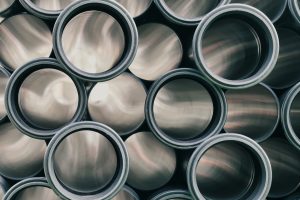Stainless steel, more commonly known as 304 stainless steel, is one of the most common and used materials on the market. A highly durable, strong and versatile material, 304 stainless steel is best known for its excellent corrosion resistance. Thanks to its extraordinary properties, 304 stainless steel is widely used in various applications in different industries for outdoor uses with water, air and fire.
COMPOSITION
304 stainless steel is a metal composed of various alloys; mainly iron, as well as chromium, nickel and carbon. Each element contributes to the proper functioning of this metal; The nickel provides stability and consistency, the chromium gives it its stainless character, allowing it to resist corrosion and rust and providing, together with the carbon, the strength necessary for the applications for which it is used.
304 STAINLESS STEEL APPLICATIONS
Due to its versatility, 304 stainless steel is used in a very wide range of domestic and industrial applications: Naval and aeronautical, automotive, food-tech, food processing and kitchen equipment, architecture, pharmaceuticals, medical equipment, petrochemicals, power generation, chemical plants, paper mills, etc…
 PHYSICAL AND MECHANICAL PROPERTIES OF 304 STAINLESS STEEL
PHYSICAL AND MECHANICAL PROPERTIES OF 304 STAINLESS STEEL
Widely used for its optimal combination of corrosion resistance, weldability and ease of forming, 304 stainless steel properties make it particularly suitable for chemical exposures in different environments, including shipbuilding and aeronautics. Thanks to its excellent machinability properties, 304 stainless steel resists machining perfectly without losing its structural integrity. Its low carbon content also makes it non-magnetic, while providing hardening capabilities. 304 stainless steel has excellent mechanical properties, making it ideal for applications requiring a combination of corrosion resistance and ease of forming. Its low carbon content makes it resistant to intergranular corrosion and its chromium and nickel content helps prevent pitting and crevice corrosion. 304 stainless steel has excellent manufacturing characteristics such as forming, bending, drawing or spinning. In addition, it offers good impact resistance both at ambient and low temperatures. Its low carbon content also makes it ideal for welding and other high temperature applications, using all standard welding methods, without post-weld heat treatment, while offering superior strength and formability to all temperatures.
COMPARISON OF 304 AND 316 STAINLESS STEEL
Stainless steel is used in two main forms which are 304 stainless steel and 316 stainless steel, each of them having their specific properties, depending on the different applications. Used for standard applications, 304 stainless steel, in which nickel and chromium are added, aims to provide ductility to the steel. As for 316 stainless steel, it is supplemented with molybdenum. This component provides additional resistance and protection against rust and corrosion. 316 stainless steel is also known for its remarkable resistance to polluted, aggressive and humid environments and exposed to other materials, such as iodine, etc…
CONCLUSION
The versatility of stainless steel, its resistance, and its ease of machining, make it a very resistant, transformable, hygienic and aesthetic material. These facts are behind the reason for 304 stainless steel being most used on the market today. Furthermore, stainless steel is a noble material, highly ecological and durable, having multitude advantages to our era.
At ENRI, we machine all metals, including 304 and 316 stainless steel. The major asset of our company is to be able to offer you a complete service of industrial mechanics of your parts, metal parts, manufacture of your inserts, as well as their coatings (Silicone, Polyurethane, Rubber, Peek, Teflon, etc.). Do not hesitate to contact us for the realization of your projects, according to your needs and specifications.
 PHYSICAL AND MECHANICAL PROPERTIES OF 304 STAINLESS STEEL
PHYSICAL AND MECHANICAL PROPERTIES OF 304 STAINLESS STEEL